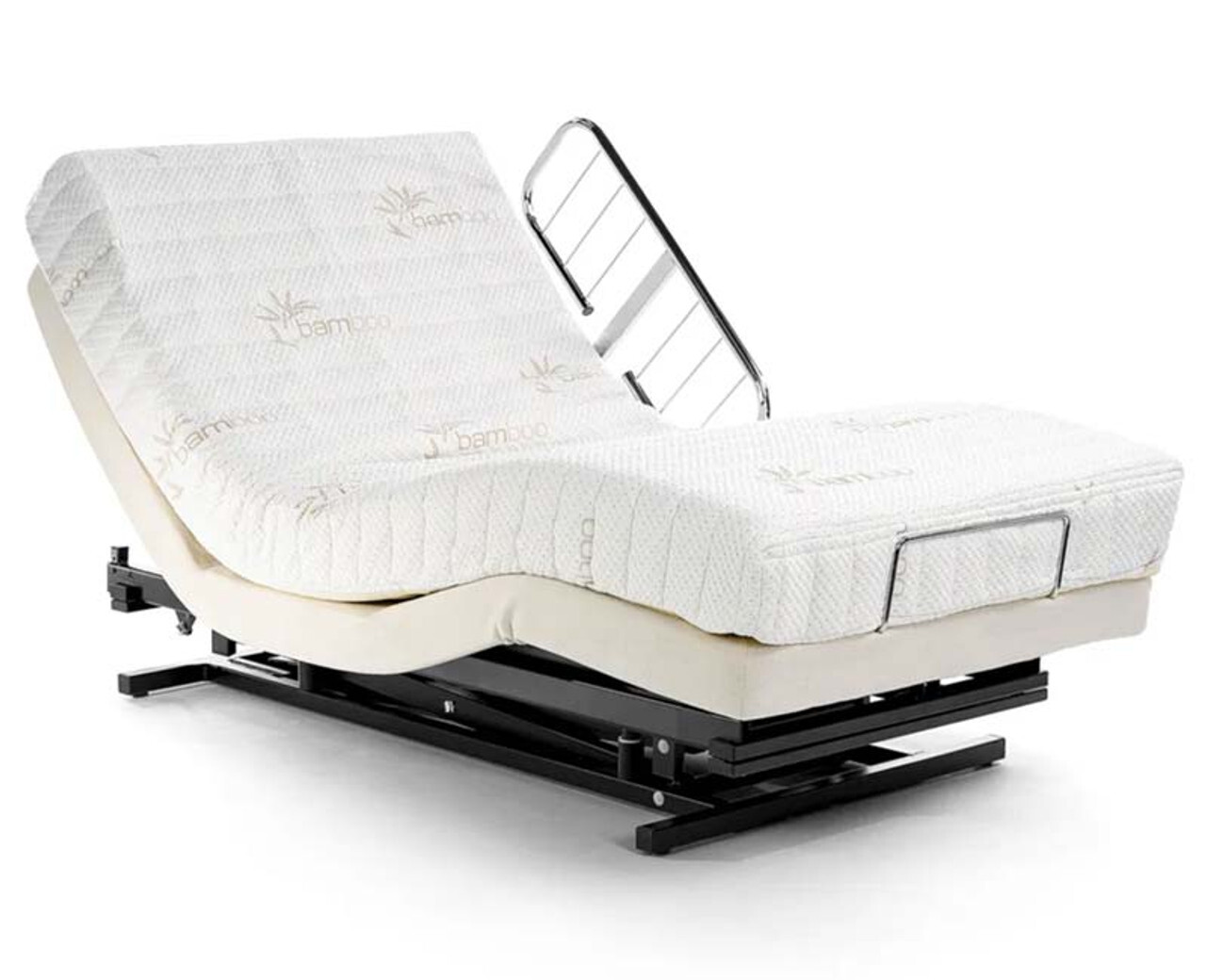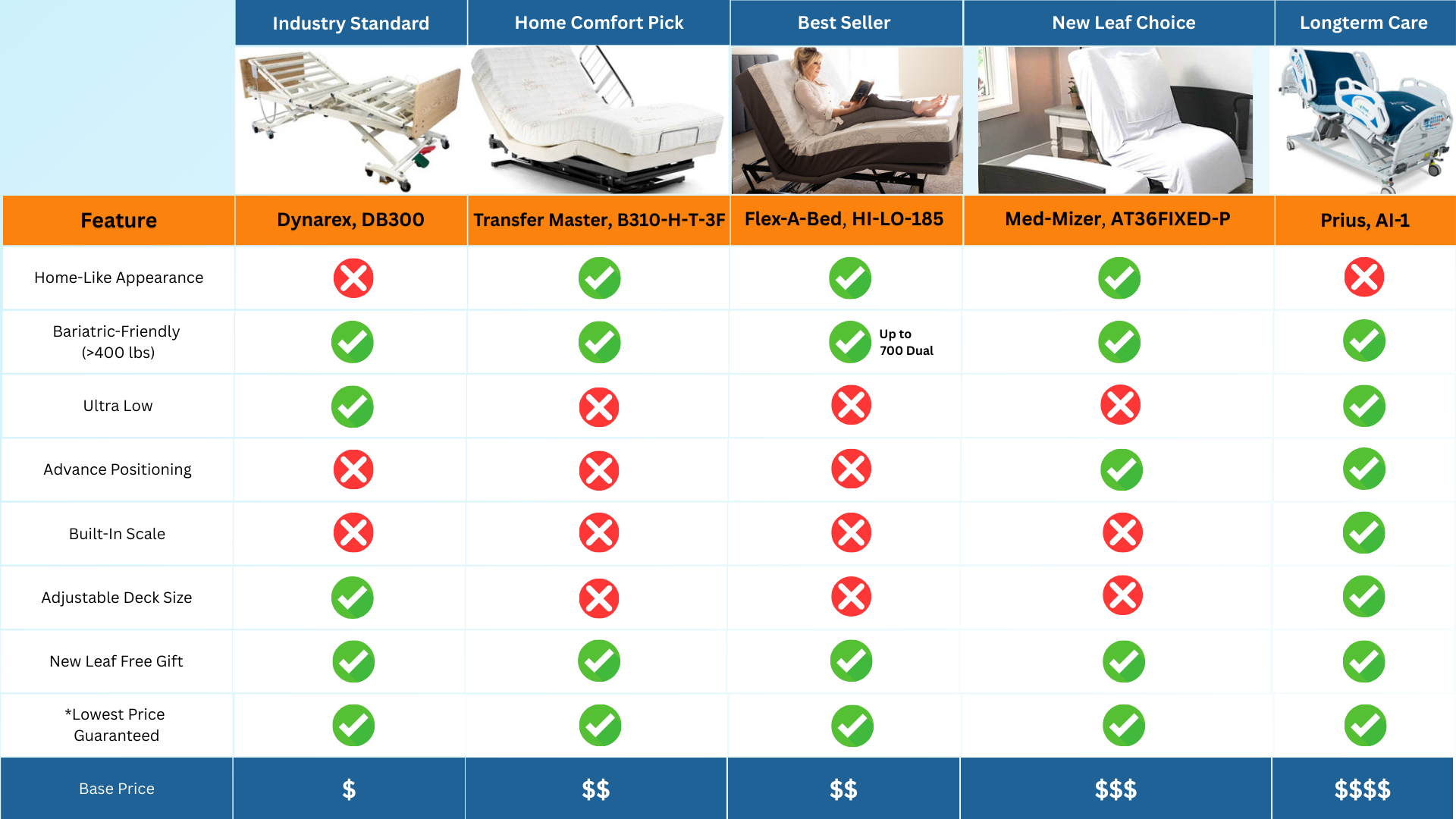FREE SHIPPING ON ORDERS OVER $75
Pediatric Hospital Beds for Home: Ensure Safety for Children

 When a child requires a hospital bed at home, choosing the right one is essential for their comfort, safety, and well-being. Pediatric hospital beds are specially designed to meet the unique needs of young patients, offering features that make caregiving easier while ensuring the child’s security and comfort. With child-friendly designs, adjustable sizing, and safety features, these beds create a safe environment for children recovering from illness, injury, or managing long-term medical needs.
When a child requires a hospital bed at home, choosing the right one is essential for their comfort, safety, and well-being. Pediatric hospital beds are specially designed to meet the unique needs of young patients, offering features that make caregiving easier while ensuring the child’s security and comfort. With child-friendly designs, adjustable sizing, and safety features, these beds create a safe environment for children recovering from illness, injury, or managing long-term medical needs.
 Selecting a pediatric hospital bed means more than just choosing a bed size—it involves finding a solution that provides both physical support and peace of mind for families. This guide will explore the importance of pediatric hospital beds, the essential features they offer, and how to choose the best option for home use.
Selecting a pediatric hospital bed means more than just choosing a bed size—it involves finding a solution that provides both physical support and peace of mind for families. This guide will explore the importance of pediatric hospital beds, the essential features they offer, and how to choose the best option for home use.
Importance of Pediatric Beds
Enhancing Safety and Security
 Children often have different care requirements than adults, especially when it comes to safety. Pediatric hospital beds are designed with features that prevent accidents, reduce fall risks, and provide a secure environment for children who may be active, restless, or have limited awareness of their surroundings. The beds often feature side rails that can be raised and lowered, helping prevent falls while allowing caregivers easy access when needed.
Children often have different care requirements than adults, especially when it comes to safety. Pediatric hospital beds are designed with features that prevent accidents, reduce fall risks, and provide a secure environment for children who may be active, restless, or have limited awareness of their surroundings. The beds often feature side rails that can be raised and lowered, helping prevent falls while allowing caregivers easy access when needed.
A well-chosen pediatric hospital bed can also offer support for specific health needs, such as those requiring regular repositioning, respiratory support, or assistance with movement. By catering to a child’s unique needs, these beds provide stability and comfort, reducing the risk of injury and enhancing overall safety.
Supporting Child Development and Comfort
Pediatric beds are designed with children’s comfort in mind, ensuring that they feel safe and relaxed, even in a medical environment. These beds often come in sizes suitable for young patients, providing them with a familiar, comforting space that doesn’t overwhelm. The right bed can support healthy rest and recovery, which is crucial for physical healing and emotional well-being during extended home care.
 By choosing a bed tailored to their size and needs, children can enjoy a sense of security, making them more comfortable and cooperative during care activities. This comfort can significantly impact a child’s recovery and daily happiness, as well as their caregiver’s peace of mind.
By choosing a bed tailored to their size and needs, children can enjoy a sense of security, making them more comfortable and cooperative during care activities. This comfort can significantly impact a child’s recovery and daily happiness, as well as their caregiver’s peace of mind.
Key Features of Pediatric Hospital Beds
Child-Sized Design and Adjustable Sizing
Pediatric hospital beds are typically smaller than standard hospital beds, designed to fit children from infants to teenagers. This sizing not only ensures that the bed provides appropriate support but also helps children feel more at ease. Adjustable bed lengths and widths allow the bed to grow with the child, providing a long-term solution that adapts to their changing needs.
Adjustable sizing also means that caregivers can create a setup that offers maximum comfort while optimizing space within the home, especially important for smaller rooms or multi-purpose spaces.
Safety Features for Active Children
Safety is a top priority for pediatric hospital beds, as children are often more active than adults. Pediatric beds come equipped with robust safety features, including side rails, which prevent children from rolling or climbing out of bed unintentionally. Many side rails are padded for additional comfort and have adjustable heights to accommodate different care needs.
Some pediatric beds are designed with lockable wheels, ensuring the bed remains securely in place during care activities. In addition, these beds often include rounded edges and child-safe materials to further minimize risks. For children with specific medical needs, such as those prone to seizures or mobility challenges, these safety features create a secure environment that eases caregiving and provides peace of mind.
Adjustable Head and Foot Positions
Like adult hospital beds, pediatric models typically offer adjustable head and foot positions. This allows caregivers to position the child comfortably for activities such as eating, reading, or resting, as well as for certain medical needs like respiratory support. By elevating the head or feet, caregivers can help relieve pressure, aid circulation, and reduce discomfort during extended periods in bed.
Adjustable positioning also assists in administering treatments or therapies that require the child to be in specific postures. This functionality ensures that pediatric hospital beds not only support comfort but also aid in delivering essential care.
Best Beds for Children
Beds with Full-Safety Rails
Beds equipped with full-safety rails provide comprehensive protection for children who may be more active or prone to movement during sleep. For young children or those with limited mobility awareness, full rails act as a safeguard, preventing falls and reducing the risk of injuries. Models such as the Hill-Rom P500 Pediatric Bed feature secure, adjustable side rails designed specifically for child safety.
These beds are also often height-adjustable, allowing caregivers to position the bed at a level that facilitates safe transfers in and out of bed. This flexibility is especially beneficial for caregivers who may need to assist the child frequently, as it reduces strain and provides a more comfortable care routine.
Low-Height Beds for Independent Mobility
Low-height pediatric beds are ideal for children who can move independently but require the safety of a hospital bed. Low-profile beds, such as the Medline Pediatric Low Bed, allow children to easily access the bed without climbing or jumping, reducing the risk of falls while supporting their independence.
Low beds also benefit children with limited mobility or those who are in physical therapy, as they allow the child to safely practice transfers or movements. For families prioritizing both independence and safety, a low-height pediatric bed can be an excellent choice.
Adjustable Beds for Therapy and Comfort
For children requiring frequent repositioning or specific care routines, adjustable beds with motorized functions are highly beneficial. These beds, like the Drive Medical Fully Electric Pediatric Bed, allow caregivers to adjust the head, foot, and height with ease, providing customized comfort and adaptability. Electric adjustments make it simple to change positions, which is essential for children with specific medical needs or who are at risk of pressure sores.
Motorized beds are also ideal for families managing long-term care at home, as they reduce caregiver strain and allow for a flexible, responsive approach to supporting the child’s comfort.
Choosing a Pediatric Bed for Home
Assessing Health and Safety Needs
When choosing a pediatric hospital bed, it’s essential to consider the child’s specific health needs and safety requirements. For children who need frequent monitoring or have a high risk of falls, beds with full-safety rails and adjustable heights are often the best choice. For more independent children, a low-height bed with partial rails might provide enough security while allowing freedom of movement.
Consider also the child’s medical needs, such as the requirement for head elevation for respiratory support or regular repositioning to prevent pressure sores. Selecting a bed that accommodates these needs will support not only the child’s physical health but also their overall comfort and ease of care.
Considering Long-Term Usability
For children with long-term care needs, choosing a bed that adapts to their growth and changing requirements can be a practical decision. Adjustable beds that offer flexible sizing or have modular features allow the bed to be used for several years, making it a worthwhile investment for families. By selecting a bed with adaptable features, caregivers can ensure that the child’s comfort and safety are consistently maintained, even as they grow.
Budget and Insurance Coverage
Pediatric hospital beds can vary widely in cost, depending on their features and specifications. It’s worth exploring health insurance coverage, as many policies partially or fully cover the cost of hospital beds when deemed medically necessary. This can significantly reduce the financial burden and help families access high-quality beds that provide essential support.
For families without coverage, considering budget-friendly options with core safety and comfort features may be the best approach. There are many models that provide essential support without the additional costs of advanced features, making it easier to create a safe, comfortable environment for home care.

Final Thoughts
Choosing a pediatric hospital bed for home use is a vital decision that affects the child’s comfort, safety, and overall well-being. By understanding the unique features of pediatric beds—from child-friendly sizing to robust safety elements—families can create a supportive, secure environment that makes both caregiving and everyday life easier.
The right pediatric hospital bed transforms the home into a place of healing and comfort, allowing children to feel safe, cared for, and comfortable as they navigate their health journey. Whether you opt for a low-height bed for mobility or a full-safety rail bed for maximum security, a well-chosen pediatric hospital bed provides essential support, bringing peace of mind to both the child and their caregivers.
